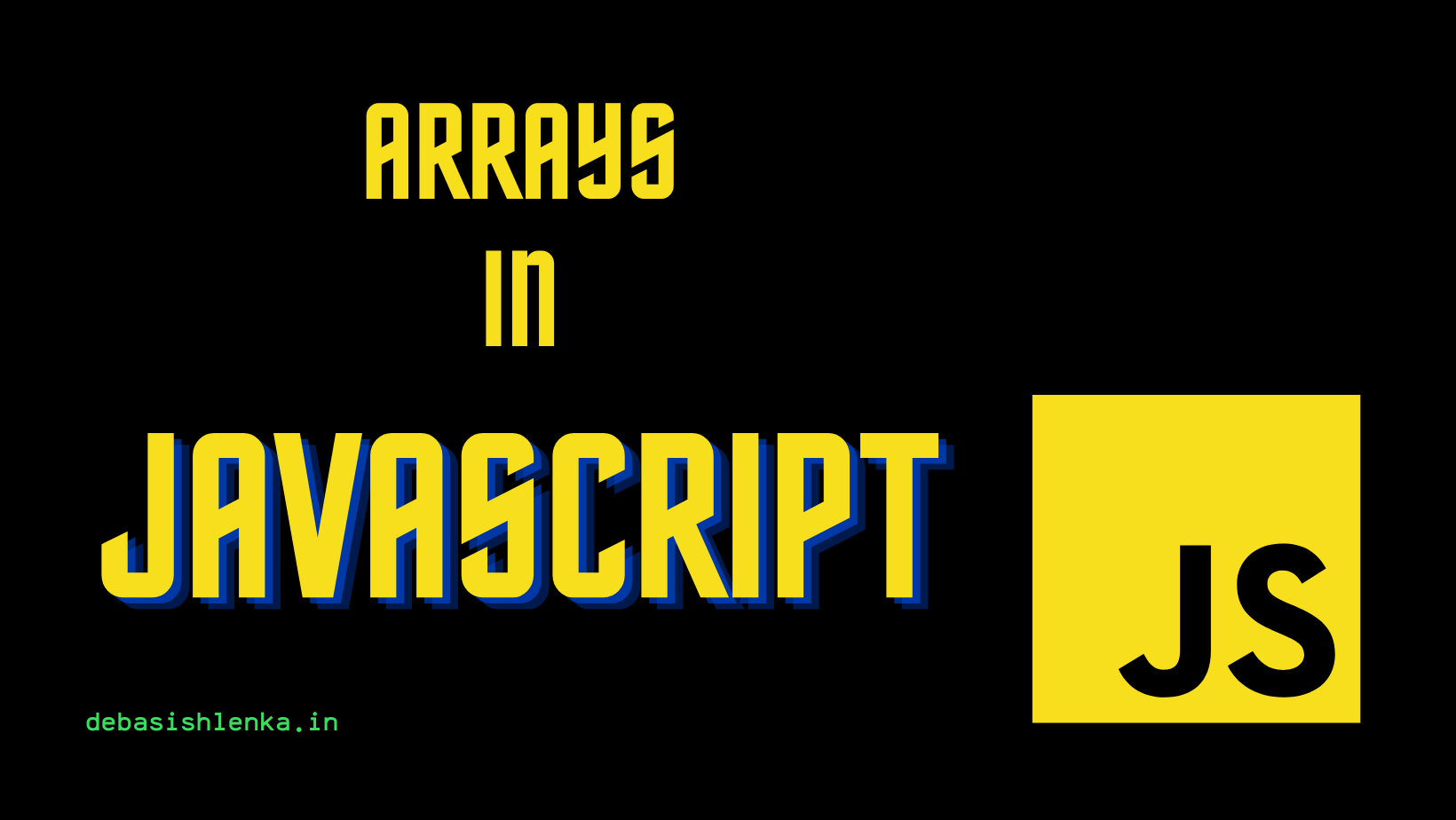Arrays in JavaScript
 Debasish Lenka
Debasish LenkaTable of contents

The array is like a big container into which we can throw variables and later use them. It helps us to store multiple elements in a single variable using a single variable name. In JavaScript Array isn’t primitive, it’s an object.
Basic Array Operations and syntax
Creating an array :
const pets = ['Bruno' , 'Buddy' , 'Kuki' ];
//or we can also do,
const num = new Array (12 , 13 , 14) ;
To retrieve elements :
console.log(pets); //prints the whole array
console.log(pets[0]); //prints the first element , arrays are zero based
The .length property :
console.log(pets.length); //prints 3 , length is calculated from 1 not 0
console.log(pets[pets.length-1]); //prints the last element of the array
We can also mutate the array using [ ],
pets[0] = 'Snowy'
console.log(pets); // 'Snowy' , 'Buddy' , 'Kuki'
Arrays also can store variables,
const firstName = 'Debasish'
const fullName = [ firstName , “Lenka” ]// prints Debasish Lenka
We can also include an array inside of an array,
const bio = [fullName , 'Job: Developer 🧑🏻💻'];
console.log(bio);
//console
**0**: (2) ['Debasish', 'Lenka']
**1**: "Job: Developer 🧑🏻💻"
**length**: 2
push method(adds element to end of the array):
const boys = ['Biki','Gudu','Raj'];
boys.push('Jay');
console.log(boys) // 'Biki' , 'Gudu' , 'Raj' , 'Jay'
/*push function also reyturns the length of the new array. if we store the above push
function in a const and try to capture it */
const pushed = boys.push('Jay')
console.log(pushed); // returns 4
unshift method(adds to the beginning of the array):
boys.unshift('John');
console.log(boys); // 'John' , 'Biki' , 'Gudu' , 'Raj' , 'Jay'
pop method (Remove element from end) :
boys.pop();
console.log(boys); // 'John' , 'Biki' , 'Gudu' , 'Raj'
shift method (Remove element from beginning) :
boys.shift();
console.log(boys); // 'Biki' , 'Gudu' , 'Raj'
indexOf method tells us in which position a certain element is in the array :
console.log(boys.indexOf('Biki')); // 0
console.log(boys.indexOf('Sky')); // -1
includes method (returns true if the element is present in the array and false if the element is not present in the array):
boys.push(23);
console.log(boys); // 'Biki' , 'Gudu' , 'Raj' , 2023
console.log(boys.includes(2023));//true
console.log(boys.includes('2023'));//false //because it's testing with strict equality and doesn't do Type Coercion
Array.reverse() :
const boys = ['Biki' , 'Gudu' , 'Raj'];
console.log(boys);
// output: 'Biki' , 'Gudu' , 'Raj'
const reversed = boys.reverse();
console.log(reversed);
// output: 'Raj' , 'Gudu' , 'Biki'
// reverse is destructive , it changes the original array.
console.log(boys);
// output: 'Raj' , 'Gudu' , 'Biki'
Conclusion:
There are a lot of other methods in JavaScript and we can always refer to MDN for the same ✨. I hope you found this article useful, if you need any help or want to give any suggestions please let me know in the comment section.
Feel free to contact me.
Subscribe to my newsletter
Read articles from Debasish Lenka directly inside your inbox. Subscribe to the newsletter, and don't miss out.
Written by

Debasish Lenka
Debasish Lenka
Hey 👋 My name is Debasish, I'm a System Engineer and a passionate Web Developer who loves to experiment with new technologies and build projects. I like to share and showcase my tips and knowledge on this blog. Since you are here feel free to browse through some of my posts, I'm sure you will find something useful and interesting. Hope you are feeling excited!